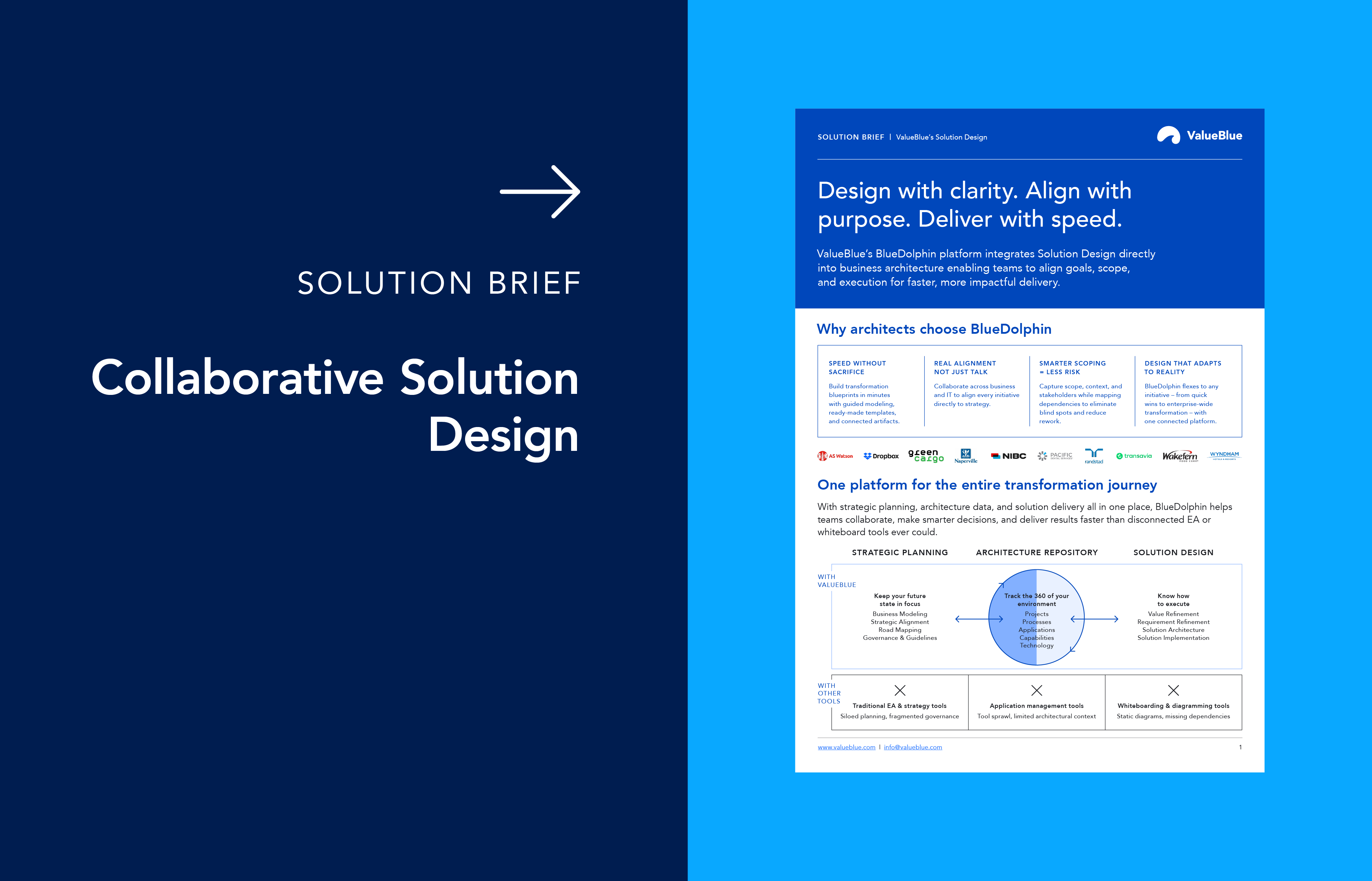Guide - Four reasons digital transformation fails
Lockdown has changed the way we live
Before the outbreak of COVID-19 two and a half years ago, I, like a lot of us, had been shopping online for more than a decade already. Groceries, clothes, the latest electronic gadgets — I was fully familiar with having these items neatly and conveniently delivered right to my own front door.
Despite that, I still also relied on physical visits to stores from time to time.
“I need some advice to buy the right tool.”
“What size should I get? It’s difficult to judge without fitting the item.”
“I need it today, really…”
All these questions were easily answered by simply heading to the shop, tape measure or broken item in hand. A comfort zone; a reassuring fall-back option to lean on.
Of course, all of that changed pretty instantly in March 2020. We could no longer run to the local store, spend a Saturday morning browsing the clothes rails or go and ask the local DIY-store employee which size racket wrench we needed. Our physical visits to stores and service providers instantly stopped, and to be honest with you, I doubt if I will ever find my way back again.
Because why go to that trouble when there is now a vast number of suppliers offering not only those same products – but perhaps more importantly – offer their services online? I can even select ‘same-day delivery’ if I’m really in a pinch.
And the reality is that I know I’m not the only one. According to McKinsey, the grocery e-commerce landscape in North America alone accelerated by three to five years in just a matter of months when the first lockdown was introduced in 2020.
North America's grocery e-commerce landscape accelerated by three to five years in just months during 2020's lockdown. McKinsey, 2021
Meet opportunities, face threats
As I stated above, the changing market provides companies with both opportunities, as well as challenges. These are two sides of the same coin.
Heads represents the general trends: digitalization, customers expecting instant service and more freedom, outsourcing infrastructure to third-party suppliers and moving to the cloud, and many more. These are the developments companies will have to follow and abide by, or risk becoming obsolete and losing customers, users, and revenue.
Tails, on the other hand, represents the way companies will need to deviate from that paved road. How they can stand out from the crowd by being unique in a certain way, such as with an effective go-to-market strategy, disruptive product innovation, or customer care. With the current surplus of product marketing opportunities, simply following what everybody else is already doing will not help you conquer the world.
The key lies in striking the balance between moving in the direction that is expected by your customers, while still finding ways to be different and appealing. If I flip a coin it always lands facing one way or the other, but never standing upright. It is only by taking the time to carefully position the coin that it will stay that way. The same goes for growing a company through digital transformation. Either only moving with the flow, or only being unique will most likely not result in a successful long-term business.
So, you’ll need to balance the two approaches. Ideally, all of your organization’s projects and initiatives will have a mix of the two sides embedded in the goals. It won’t benefit the organization if more projects tend to be ‘heads’ than ‘tails’, or the other way around. It is vital to have a holistic overview and alignment between transformation projects and their planning and goals, and the organization’s overall course and objectives from the start.
Unfortunately, that’s not always the case…
Avoid the Pitfalls of 
Digital Transformation
Learn why most initiatives fall short – and how to lead yours to lasting success with practical, proven strategies.
The shift to digital-first
The shift towards a digital-first marketplace is nothing new; it’s been taking place for the last two decades.
But what began with straightforward B2C online ‘web shops’ has now infiltrated almost every industry. B2B buyers today spend a significant part of the buying journey online, and vendors have enabled this with a move to digital-first, online offerings.
This has resulted in a landslide. New companies entering the market took over a significant share of the existing ones. What once was a rather static market 20 to 30 years ago, is now dominated by a digital-first movement, with many of the household name giants of the second and third industrial revolutions being simply outpaced by disruptive and young providers — many of whom didn’t even exist a mere few years ago.
We are truly in the midst of the 4th industrial revolution and the sixth wave in innovation, and COVID-19 had no small part to play.

Meet opportunities, face threats
As I stated above, the changing market provides companies with both opportunities, as well as challenges. These are two sides of the same coin.
Heads represents the general trends: digitalization, customers expecting instant service and more freedom, outsourcing infrastructure to third-party suppliers and moving to the cloud, and many more. These are the developments companies will have to follow and abide by, or risk becoming obsolete and losing customers, users, and revenue.
Tails, on the other hand, represents the way companies will need to deviate from that paved road. How they can stand out from the crowd by being unique in a certain way, such as with an effective go-to-market strategy, disruptive product innovation, or customer care. With the current surplus of product marketing opportunities, simply following what everybody else is already doing will not help you conquer the world.
The key lies in striking the balance between moving in the direction that is expected by your customers, while still finding ways to be different and appealing. If I flip a coin it always lands facing one way or the other, but never standing upright. It is only by taking the time to carefully position the coin that it will stay that way. The same goes for growing a company through digital transformation. Either only moving with the flow, or only being unique will most likely not result in a successful long-term business.
So, you’ll need to balance the two approaches. Ideally, all of your organization’s projects and initiatives will have a mix of the two sides embedded in the goals. It won’t benefit the organization if more projects tend to be ‘heads’ than ‘tails’, or the other way around. It is vital to have a holistic overview and alignment between transformation projects and their planning and goals, and the organization’s overall course and objectives from the start.
Unfortunately, that’s not always the case…
Over the past twenty years of my professional life, I’ve witnessed the uprise of the 4th industrial revolution. In that period, I contributed to multiple digital transformation programs as Lead Enterprise Architect, and advised and guided organizations in their digital transformation journeys. I’ve seen many pitfalls and each pitfall on its own is unique. However, when taking a step back for a holistic view, I’m able to distinguish 4 main areas to analyze where transformation initiatives fail. The areas are
1) goals and measures for digitalization,
2) leadership & organizational factors that influence the transformation,
3) technology readiness for transformation,
4) transformation cost.
Goals & Measures
 With the vast number of opportunities that come with digital, it’s important to have a clear view on the company vision and long term business objectives. This is required to understand where digitization and digitalization opportunities can be leveraged to achieve long term business objectives.
With the vast number of opportunities that come with digital, it’s important to have a clear view on the company vision and long term business objectives. This is required to understand where digitization and digitalization opportunities can be leveraged to achieve long term business objectives.
Often, organizations see digital transformation as a one-off initiative and see the transformation as a goal on itself, blinded by the light of digital opportunities. Due to this, they spend little to no time to determine goals for the transformation initiatives and how these goals contribute to business and customer value. Initiatives often float without direction due to the lack of clear goals and KPI’s to measure progress and success. More than often, this leads to undesired results that hardly contribute to increased productivity, efficiency and customer satisfaction. And even if goals are determined at the level of strategic management, they often aren’t communicated and discussed with key players in the organization that need to execute on those goals.
It looks like that the people are forgotten in the equation, but without the people that need to work on that transformation, and their understanding of the end objective, Digital Transformation initiatives will not deliver up to their promise.
Leadership & Organization
 It goes without saying, that most people, and not in the least C-Level management, understand that you can’t be successful in any initiative if there aren’t clear and comprehensible business goals, clear KPI’s and a plan to achieve the envisioned end state. So how is it then possible that this isn’t properly done for digital transformation projects? This can be found in the culture, mindset and the lack of digital savviness in top level management at large organizations. They often don’t take things to seriously and see digital transformation as an IT “thing”. They think of it as a capability that supports the business instead of seeing it as the enabler that drives business growth companies. IT is still seen as a cost center.
It goes without saying, that most people, and not in the least C-Level management, understand that you can’t be successful in any initiative if there aren’t clear and comprehensible business goals, clear KPI’s and a plan to achieve the envisioned end state. So how is it then possible that this isn’t properly done for digital transformation projects? This can be found in the culture, mindset and the lack of digital savviness in top level management at large organizations. They often don’t take things to seriously and see digital transformation as an IT “thing”. They think of it as a capability that supports the business instead of seeing it as the enabler that drives business growth companies. IT is still seen as a cost center.
This is where the mindset drastically differs from startups that have digital-only business models in their dna. It results in a lack of commitment from leadership to position the transformation as the key strategic pillar drive business growth. Because of this, digital transformation deliverables are often removed or heavily reduced from project scopes, resulting in an unmanaged execution of the transformation.
Another problem is that organizations focus on the technology change, but forget about the people and culture. This comes with various issues. First of all, digital transformation is a continuous process that forces organizations to permanently focus on improving their digital business model and the way companies are organized. This requires a shift in the mindset of everybody in the organization, starting in the boardroom. The new status quo is that change is constant and accelerates. This comes comes with fear to lose their jobs and resistance to replace the comfort of their current position.
The power of the people shouldn’t be neglected. By forgetting the people in the transformation and their future perspectives, C-level managers are making a giant mistake, resulting in a graveyard of failed digital transformation initiatives. Adopting strategic characteristics from High Performance Organizations can help companies to solve many of these issues.
But even if the culture is right. And even if the people are willingly to change, organizations frequently have a lack of talent on key positions. Getting the right talent on board and actively train current employees for future tasks should be on top of the digital transformation agenda.
Technology readiness
 Companies that haven’t been a digital-first company from the start, will most probably face many legacy issues in their technology. Many of the opportunities that come with the digital transformation require some kind of web presence of applications, equipment, and technology. Connectivity, operability, and security are key requirements to successfully incorporate technological innovations in the IT landscape. Many companies that have been established in the 20th century don’t have a ‘digital-transformation-ready’ IT landscape. This also applies to companies that haven’t created architectures for their technology ecosystem to support business growth. Even with a fantastic vision to digitalize business models and the right people and culture, a poorly equipped IT ecosystem will stand in the way of success. Without proper cloud-first IT solutions for connectivity, operability, security, adaptability, and scalability, nine out of ten transformations will never live up to their promise and fail almost instantly after launch. It’s just too hard to build a digital business on top of an outdated techstack, broken legacy systems, and a landscape that is not equipped to be part of a global, cloud-based IT ecosystem.
Companies that haven’t been a digital-first company from the start, will most probably face many legacy issues in their technology. Many of the opportunities that come with the digital transformation require some kind of web presence of applications, equipment, and technology. Connectivity, operability, and security are key requirements to successfully incorporate technological innovations in the IT landscape. Many companies that have been established in the 20th century don’t have a ‘digital-transformation-ready’ IT landscape. This also applies to companies that haven’t created architectures for their technology ecosystem to support business growth. Even with a fantastic vision to digitalize business models and the right people and culture, a poorly equipped IT ecosystem will stand in the way of success. Without proper cloud-first IT solutions for connectivity, operability, security, adaptability, and scalability, nine out of ten transformations will never live up to their promise and fail almost instantly after launch. It’s just too hard to build a digital business on top of an outdated techstack, broken legacy systems, and a landscape that is not equipped to be part of a global, cloud-based IT ecosystem.
Cost & budget
 Looking at most failed projects, the root cause of failure is often in the mix of goals, people, and technology that I just mentioned in the three preceding items. But there is one topic that plays a central role in each of those elements: the absence of a clear financial business case!
Looking at most failed projects, the root cause of failure is often in the mix of goals, people, and technology that I just mentioned in the three preceding items. But there is one topic that plays a central role in each of those elements: the absence of a clear financial business case!
Organizations overestimate the benefits of the digital transformation. Often due to the lack of a clear vision, goals, and KPIs. I’ve seen organizations underestimate the cost of time investment, resourcing, and money required to successfully and continuously transform. Because of that, initiatives seem to be running out of budget and are paused halfway, or even stopped entirely.
The mistake is that the problem isn’t in the inefficiency of project execution, but in the lack of a properly calculated budget for digital transformation. A properly calculated budget that addresses all areas of digital transformation helps organizations to prioritize, direct, and control their transformation initiatives to meet the envisioned objectives, thus becoming a fully digital enterprise.
How to thrive in today’s digital age
Looking back at the years of contributing to digital transformation initiatives, I don’t think there is a single link or a specific step that’s always the bottleneck. It is almost always a combination of different factors, which might come to light in different stages of the initiative.
This is one of the main reasons why it is critical to create a solid foundation. Not just within the initiative itself, but moreover on the organizational level. Having dependable goals, measures, technological infrastructure, and resources provide a baseline that initiatives can use for guidance, planning, and overall goal alignment.
Next, you will need a centralized way to keep track of the different initiatives, to prevent they still work in silos. This overview will help streamline and improve your ability to allocating resources, determining risk, and prioritize projects.
In short, it’s all about making sure that initiatives are in fact helping the organization achieve its objectives, and that the initiative itself is running efficiently. Now, I know how easy this sounds, while in practice there are a thousand things to consider. But I do sincerely hope the insights in this eBook will have created a sense of awareness, helping you to (re)evaluate current or future initiatives for the four common pitfalls. Avoiding those will definitely accelerate your digital transformation initiatives, enabling your organization to thrive in these changing and unpredictable times.



